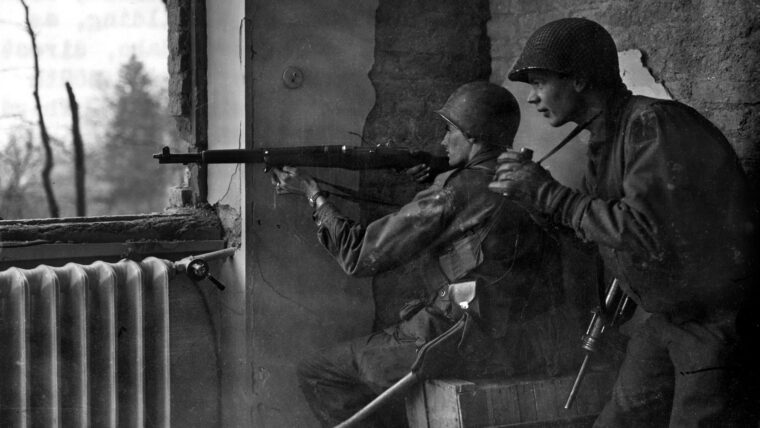
General George S. Patton
The 90th Division Comes of Age
By Kevin M. HymelLieutenant General Omar Bradley, commander of the U.S. First Army, considered his 90th Infantry Division a problem unit. Read more

General George S. Patton
Lieutenant General Omar Bradley, commander of the U.S. First Army, considered his 90th Infantry Division a problem unit. Read more
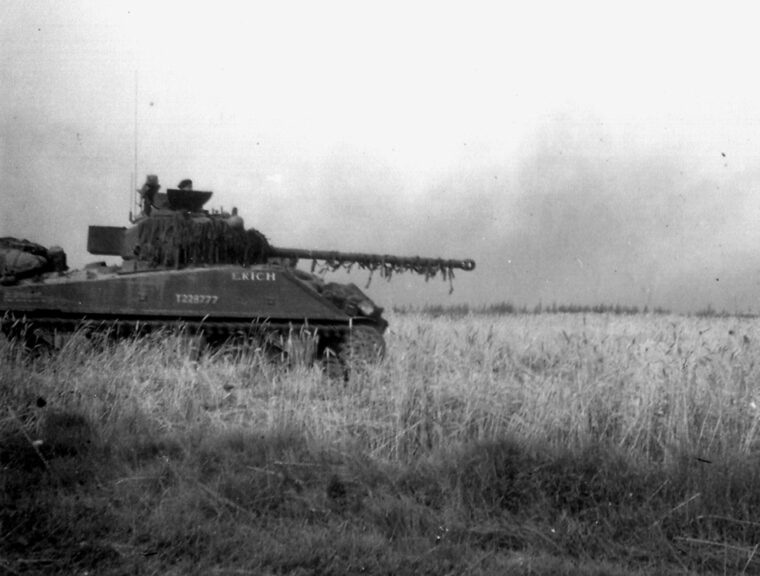
General George S. Patton
For the Allied tankers and infantrymen of the American, British, Canadian, and Free French armies battling German Panther and Tiger tanks in Normandy in the summer of 1944, the Sherman tank’s failures were glaringly evident as their own shells bounced off the hulls of the Nazi armor and they were themselves destroyed at a far greater range by the powerful German tanks. Read more
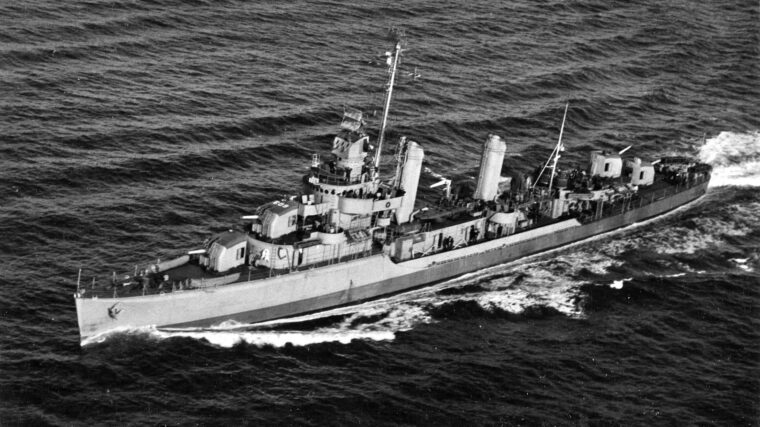
General George S. Patton
Eighty miles off the coast of New Jersey and 280 feet below the surface of the Atlantic Ocean lies the forward section of a World War II destroyer, where it came to rest more than 60 years ago. Read more
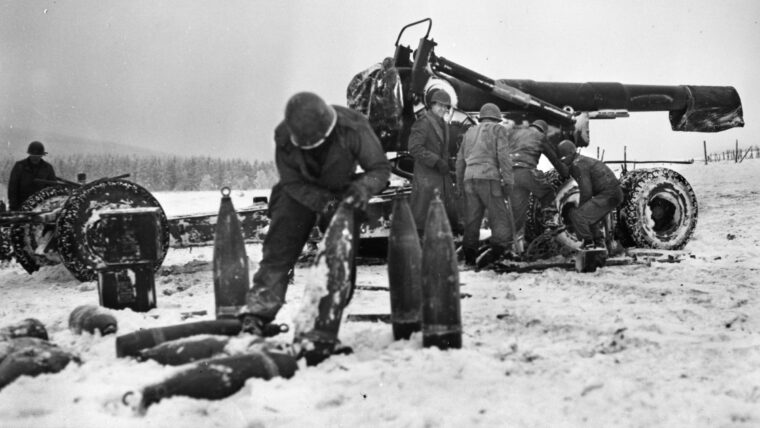
General George S. Patton
Early on the morning of December 16, 1944, the commander of the U.S. 406th Artillery Group, Colonel George Axelson, had a difficult decision to make. Read more
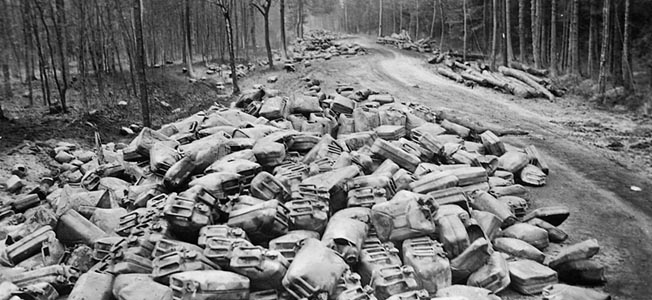
General George S. Patton
By Michael D. Hull
August 1944 saw a rosy mood of optimism and self-deception sweep through the Allied high command in France as a result of the sudden, dramatic end to the campaign in Normandy. Read more
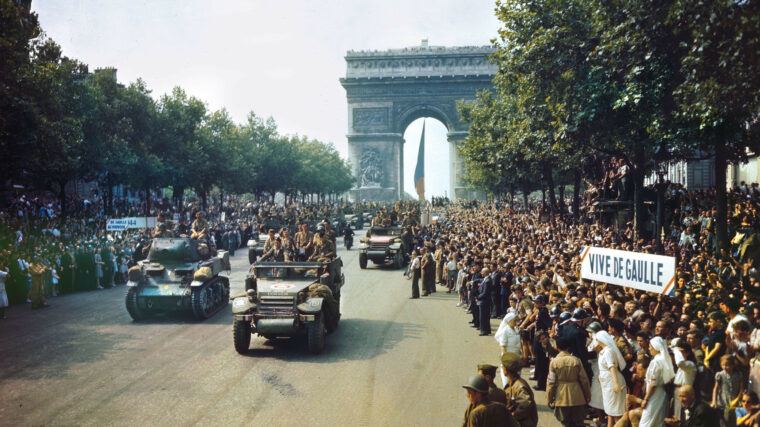
General George S. Patton
After the humiliating fall of France in June 1940, two impassioned patriots—a general and an infantry captain—refused to accept defeat and determined, against all odds, to exact retribution from the German invaders. Read more
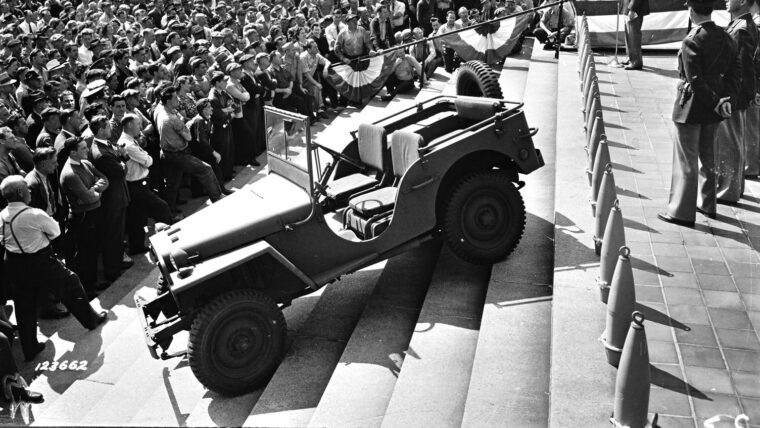
General George S. Patton
General of the Army George C. Marshall called it America’s greatest contribution to modern warfare. General Dwight D. Read more
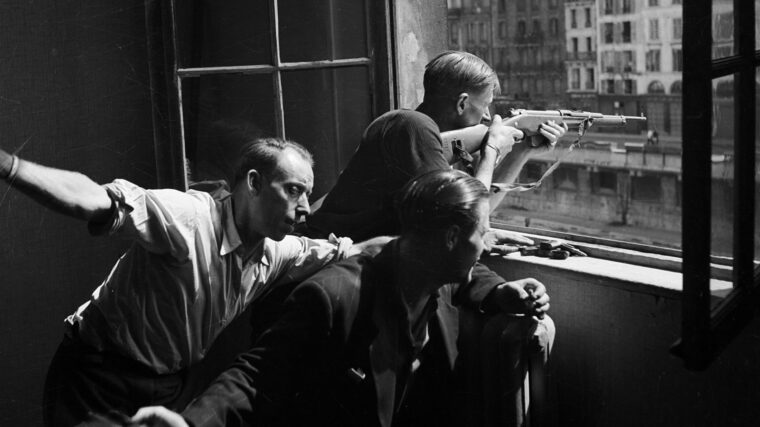
General George S. Patton
By the late summer of 1944, the Third Reich was almost surrounded. Two years earlier Adolf Hitler had ground 10 European countries under his heel along with vast expanses of North Africa and Soviet Russia. Read more
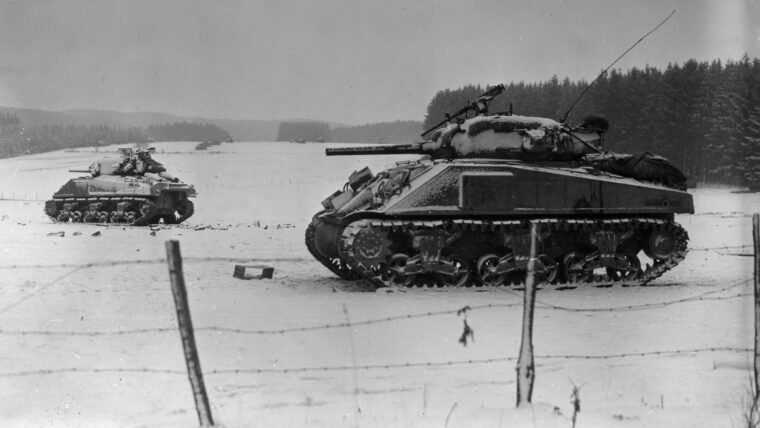
General George S. Patton
After four months and a 600-mile advance from the beaches of Normandy into Brittany and then through eastern France, the spearhead of Lt. Read more
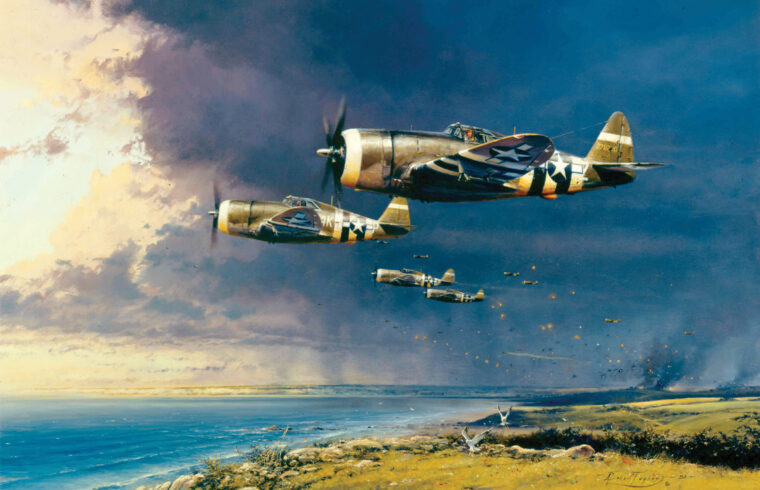
General George S. Patton
As the landing craft carrying the invading Allied ground forces of Operation Overlord motored toward the Normandy beaches on June 6, 1944, they were protected and supported by the largest aerial armada the world has ever seen. Read more
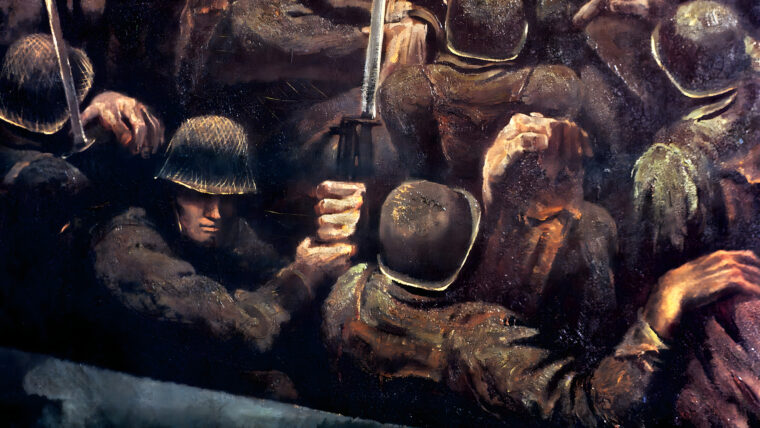
General George S. Patton
The smoke had barely cleared from the battlefields of North Africa when the victorious Allies turned their attention northward to Europe. Read more
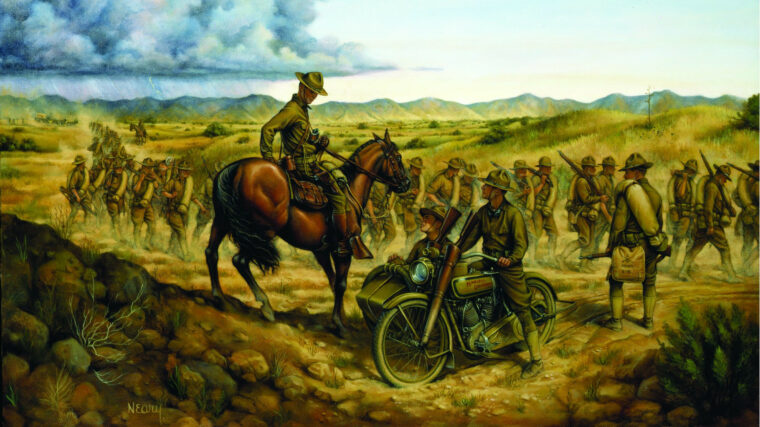
General George S. Patton
Lieutenant John P. Lucas of the 13th U.S. Cavalry was sound asleep in a small adobe shack in Columbus, New Mexico, on the night of March 9, 1916, when he was abruptly awakened by the unmistakable sounds of men and horses passing outside his window. Read more
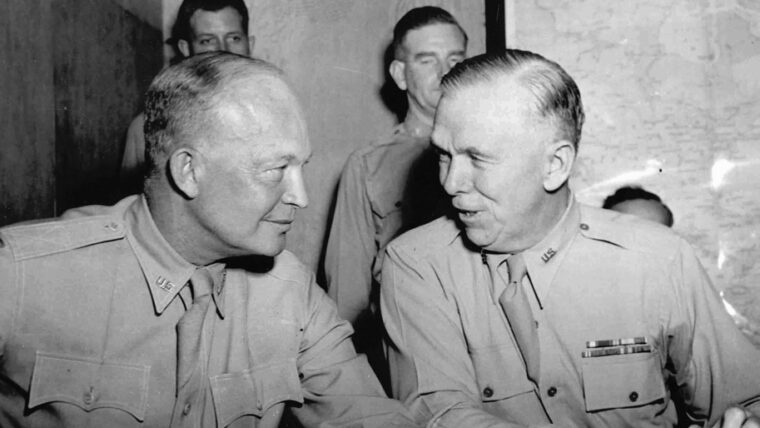
General George S. Patton
President Franklin D. Roosevelt was disturbed in the autumn of 1938 by the Munich agreement, at which the rights of Czechoslovakia were signed away, and by reports of mounting air strength in Adolf Hitler’s Nazi Germany. Read more
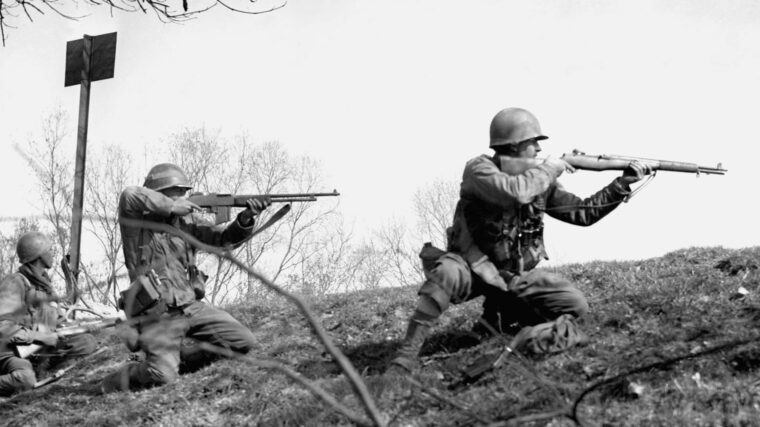
General George S. Patton
By early 1945, less than a year before General George S. Patton’s mysterious death, Adolf Hitler’s armies were almost exhausted. Read more
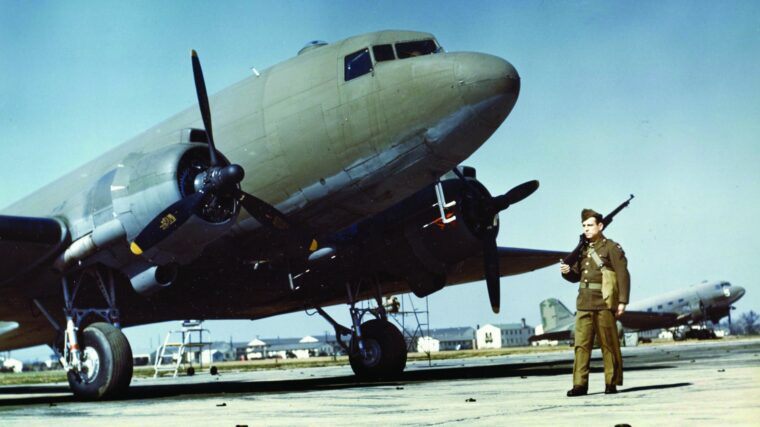
General George S. Patton
Even though, technically at least, it was not a combat airplane, the performance of the Douglas C-47 transport led General of the Army Dwight Eisenhower to label it as one of the most important weapons of World War II. Read more
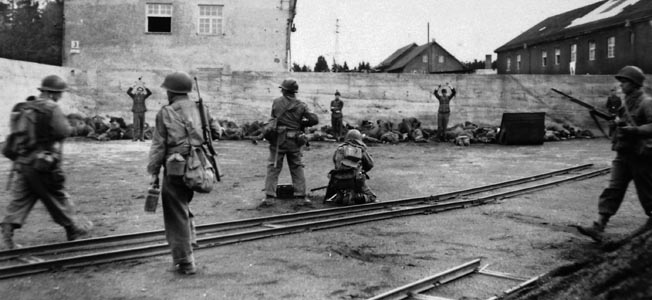
General George S. Patton
The morning of February 16, 1944, dawned foggy over the Via Anziate in Anzio, Italy. The 45th Infantry Division’s 2nd Battalion, 157th Infantry Regiment had advanced overnight to take positions on the west side of the roadway, assuming its place on the front line. Read more
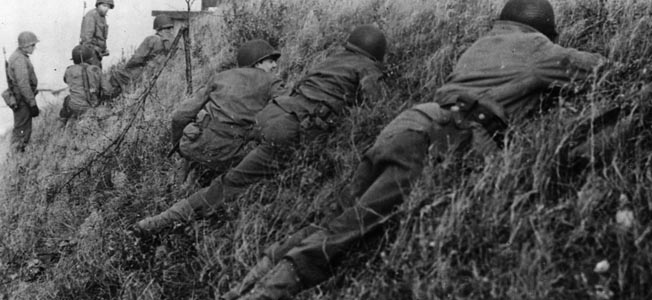
General George S. Patton
Although the U.S. First Army had already captured an intact bridge over the river at Remagen, there was still a rivalry between Patton and British Field Marshal Bernard Montgomery to cross next. Read more
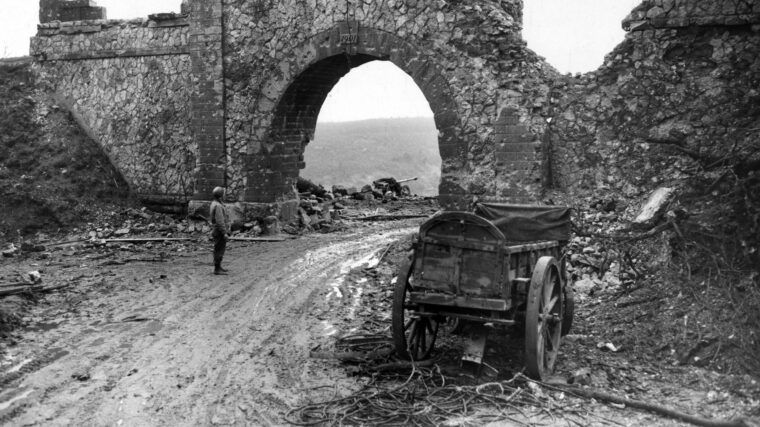
General George S. Patton
Before retreating from Fort Driant, Private Tom Tucker lit the fuse on 6,000 pounds of explosives. “We pulled the fuse lighter and took off,” recalled Tucker. Read more
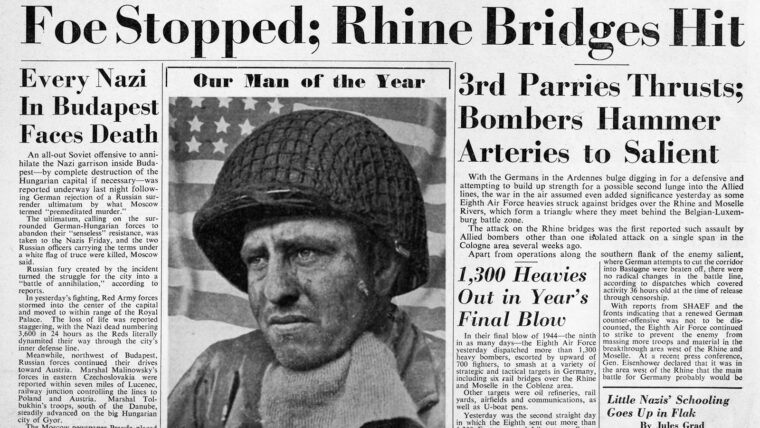
General George S. Patton
During the closing days of 1944, editors at the London edition of Stars and Stripes decided to select a frontline GI as “Our Man of the Year.” Read more
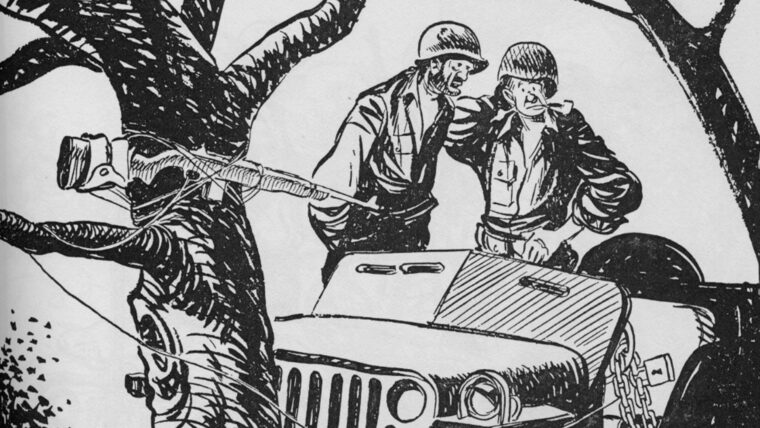
General George S. Patton
Among the thousands of American soldiers slogging through the miserable winter of 1944 in southern Italy after the Allied landing at Anzio were two GIs who existed only on paper, but who became as real to their readers as the mud-covered, K-ration-eating guys sitting next to them in their foxholes. Read more